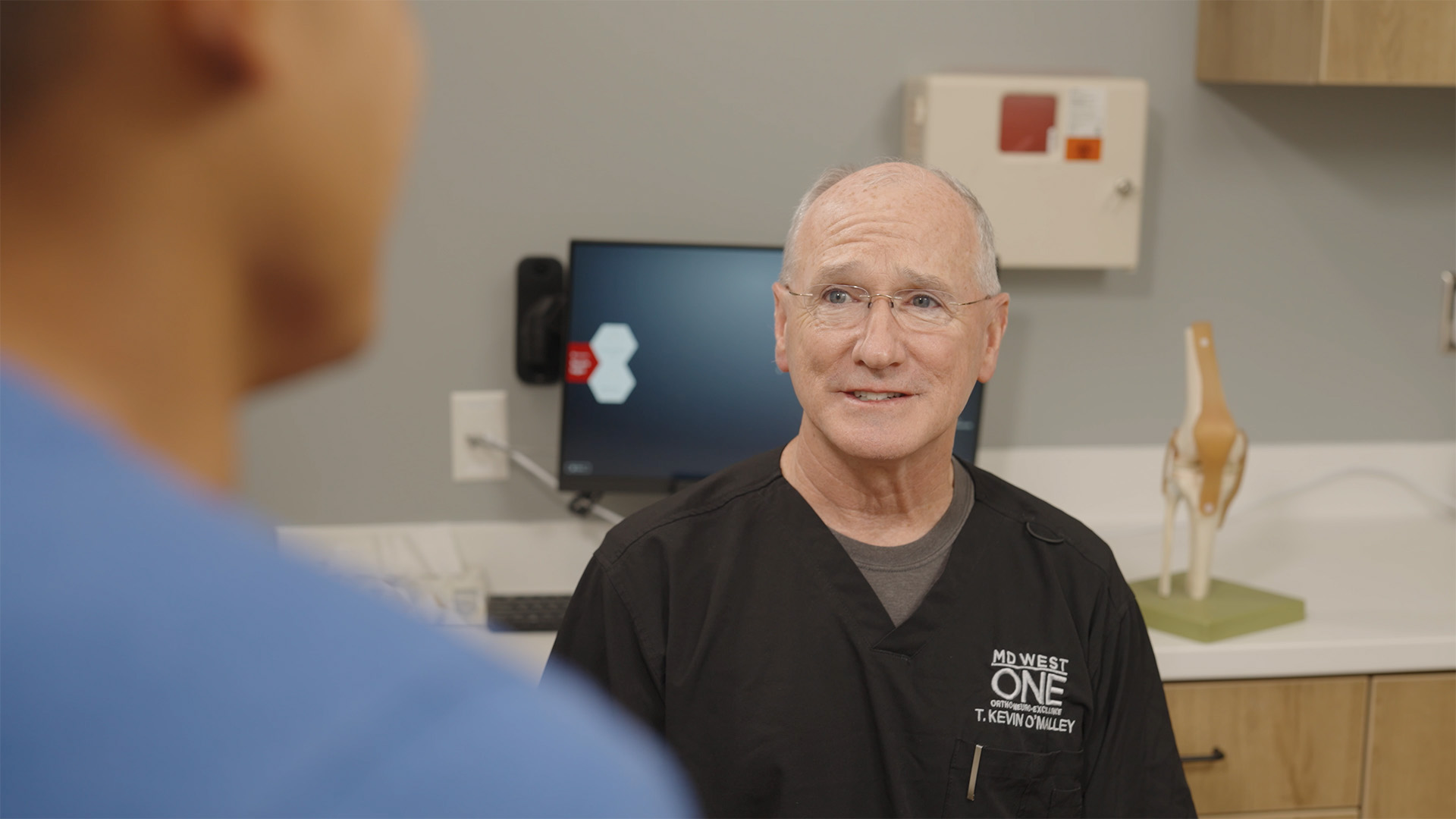Are you suffering from a labral tear of the hip?
The Omaha Hip & Knee Specialists at MD West ONE are able to properly diagnose and treat a labral tear of the hip through both surgical and non-surgical treatments. A labral tear in the hip is an injury to the hip labrum that occurs as a result of degeneration or direct injury. Repetitive motion, prolonged stress, or sudden trauama can cause this tissue to tear, fray, or even detach from the socket. If you have the following symptoms, you may want to make an appointment with one of our Board Certified Specialists.
Some signs of hip labral tears may not appear at all. However, symptoms of a labral tear may include pain in your groin or in the front of your hip. You may also notice a catching or a clicking sensation in the hip joint when you move it. If these symptoms persist or get worse after six weeks, schedule an appointment with the hip experts.
Other torn hip labrum symptoms may include:
- Pain
- Clicking or catching while in motion
- Stiffness
- Limited range of motion
- Instability in the hip joint
How does a labral tear in the hip happen?
There are many different potential causes of labral hip tears. Your hip labrum may be damaged as a result of repetitive motion, aging, direct injury, or existing structural issues in the hip. You may also be more prone to a labral tear of the hip if you participate in sports or activities that require pivoting or sudden motion in your hip joint.
Some common causes that can cause a labral tear of the hip include:
- Osteoarthritis of the hip
- Repetitive stress
- Traumatic injury to the hip
- Femoroacetabular Impingement FAI
- Deformities or other conditions in the hip

How is a labral tear in the hip diagnosed and treated?
Because the hip is a complicated joint with many moving parts, it is more difficult to diagnose a labral hip tear. In order to get a labral hip tear diagnosis, you need to schedule an appointment with a hip physician. During your appointment, your doctor will start by giving you a physical exam. You may experience some brief discomfort as you demonstrate your pain level and range of motion.
After a physical exam, your doctor will likely order imaging tests to rule out other potential conditions. Once you have a diagnosis, your physician will talk to you about your treatment options and make recommendations for your hip labrum recovery.
There are many non-surgical labral tear hip treatment options that may help with torn labrum recovery. If the condition does not improve with non-surgical methods, your physician may recommend surgical treatment.
Non-surgical
There are several non-surgical approaches to help treat a labral tear of the hip:
- Resting the joint and avoiding activities that exacerbate the labrum
- Nonsteroidal anti-inflammatory drugs (NSAIDs) to help reduce inflammation and pain
- Assistive devices such as crutches or canes
- Physical therapy to increase strength and range of motion in the hip
Surgical
If the torn hip labrum is extremely severe or not responding to non-surgical treatment methods, your doctor may recommend surgery to repair it. This arthroscopic hip surgery is a minimally invasive outpatient procedure. The surgeons uses small incisions and surgical instruments to clean up and repair the tissue. While every patient is different, torn hip labrum recovery time may take anywhere between 2-6 months.
American Orthopaedic Foot & Ankle Society
This article has been written and peer-reviewed by the American Academy of Orthopaedic Surgeons.
